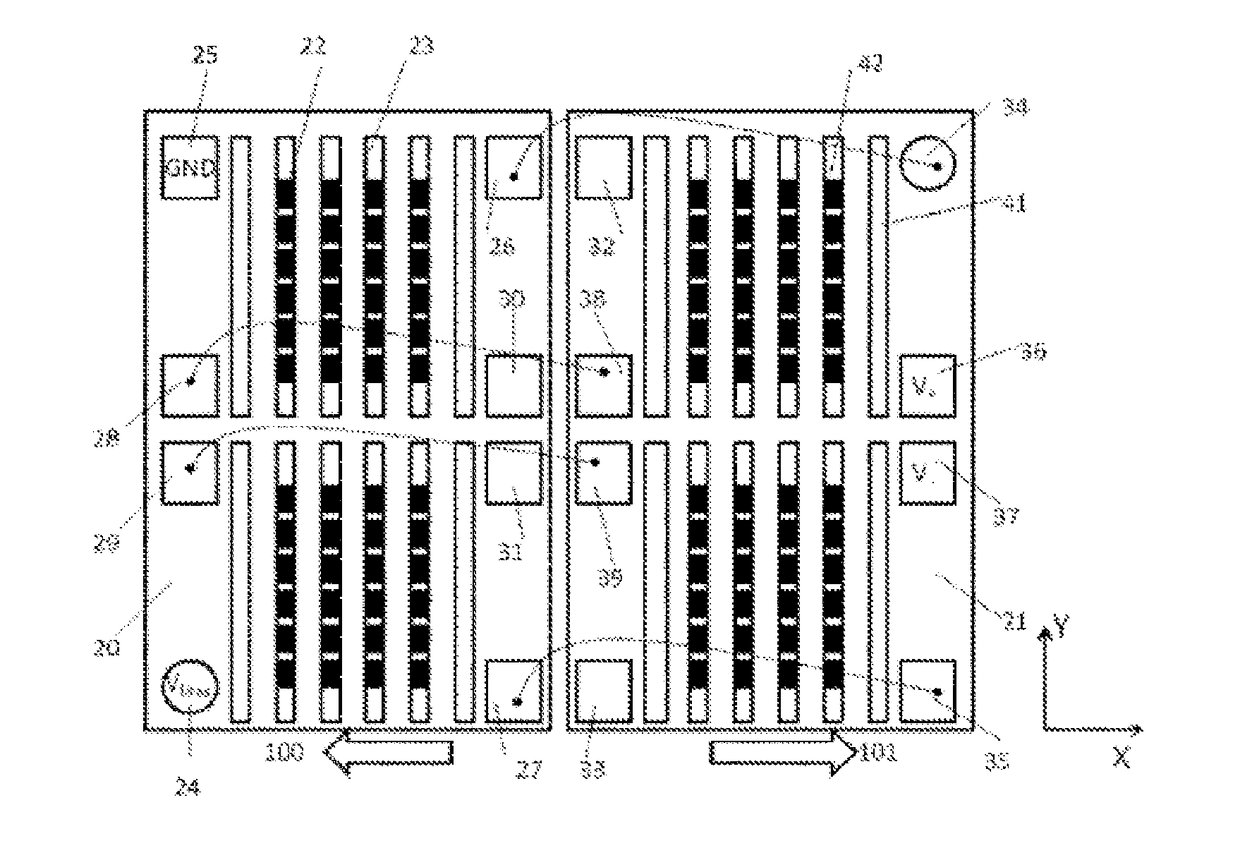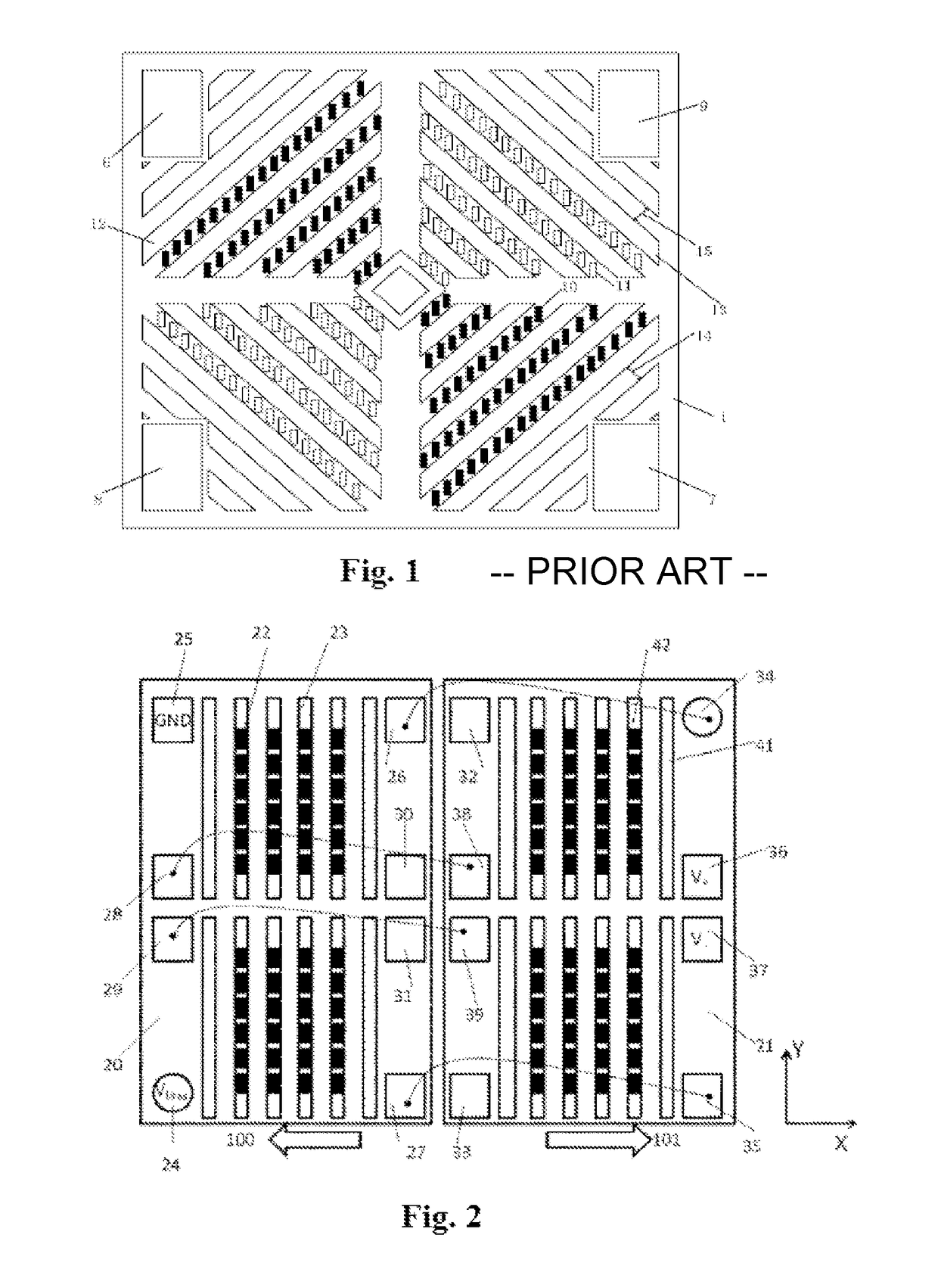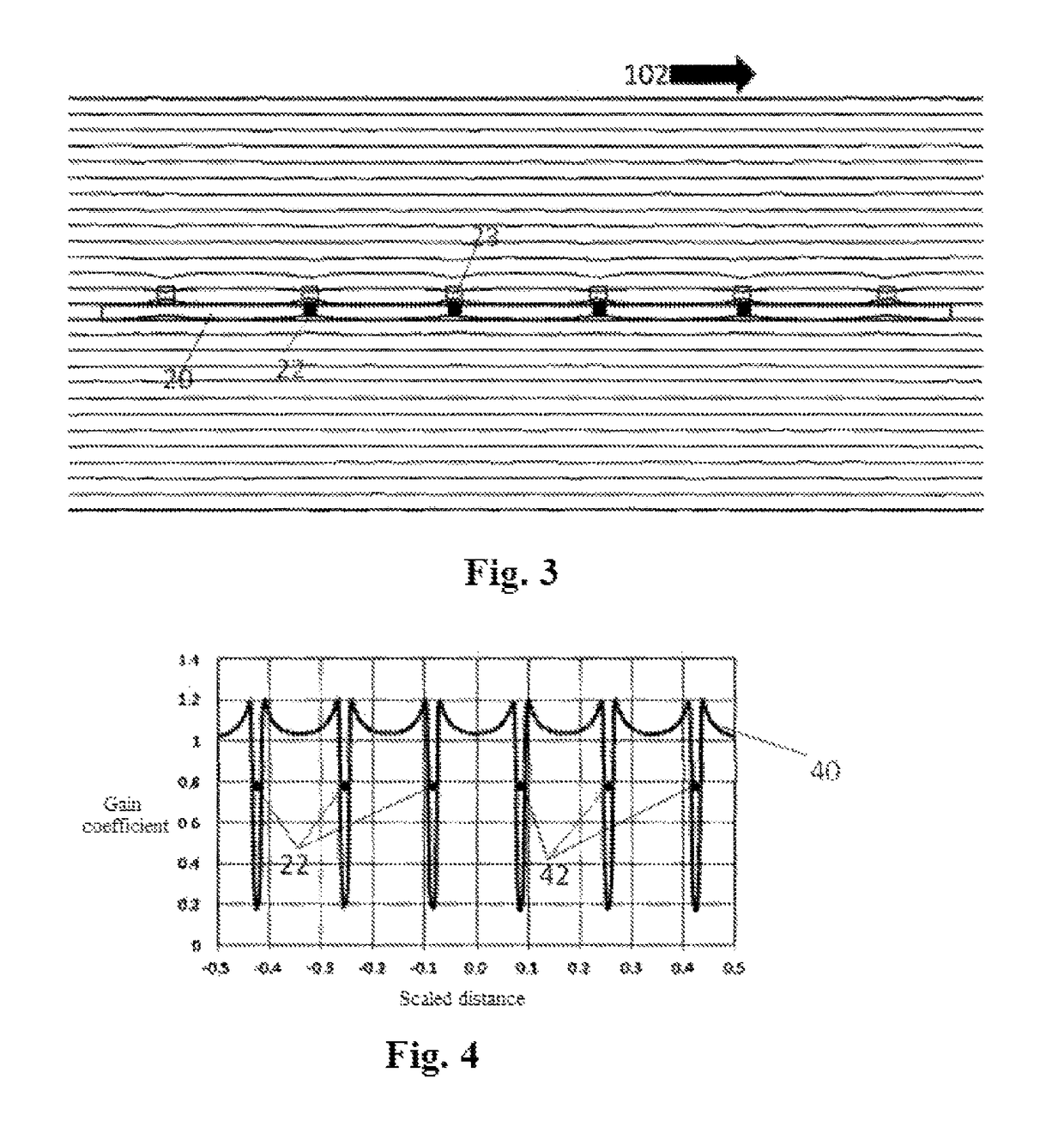Push-pull bridge-type magnetic sensor for high-intensity magnetic fields
a magnetic sensor and high-intensity technology, applied in the field of magnetosensors, can solve the problems of large power consumption, poor linearity, low sensitivity, etc., and achieve the effects of small offset, good linearity, and low power consumption
- Summary
- Abstract
- Description
- Claims
- Application Information
AI Technical Summary
Benefits of technology
Problems solved by technology
Method used
Image
Examples
embodiments
[0039]FIG. 2 is a structural schematic diagram of a push-pull bridge-type magnetic sensor in the present invention. The sensor comprises a push arm substrate 20, a pull arm substrate 21, a plurality of magnetoresistive sensing elements 22, 42, a plurality of push arm attenuators 23 and pull arm attenuators 41, and pads 24-39, wherein the magnetoresistive sensing elements 22, the push arm attenuators 23 and the pads 24-31 are deposited on the push arm substrate 20, the magnetoresistive sensing elements 42, the pull arm attenuators 41 and the pads 32-39 are deposited on the pull arm substrate 21, and the push arm substrate 20 and the pull arm substrate 21 are the same except for directions. Long axis directions of the push arm attenuators 23 and the pull arm attenuators 41 are a Y-axis direction, and short axis directions are an X-axis direction. The pads 24, 25, 36 and 37 are respectively used as a power supply terminal VBias, a ground terminal GND and voltage output terminals V+ and...
PUM
 Login to View More
Login to View More Abstract
Description
Claims
Application Information
 Login to View More
Login to View More - R&D
- Intellectual Property
- Life Sciences
- Materials
- Tech Scout
- Unparalleled Data Quality
- Higher Quality Content
- 60% Fewer Hallucinations
Browse by: Latest US Patents, China's latest patents, Technical Efficacy Thesaurus, Application Domain, Technology Topic, Popular Technical Reports.
© 2025 PatSnap. All rights reserved.Legal|Privacy policy|Modern Slavery Act Transparency Statement|Sitemap|About US| Contact US: help@patsnap.com



